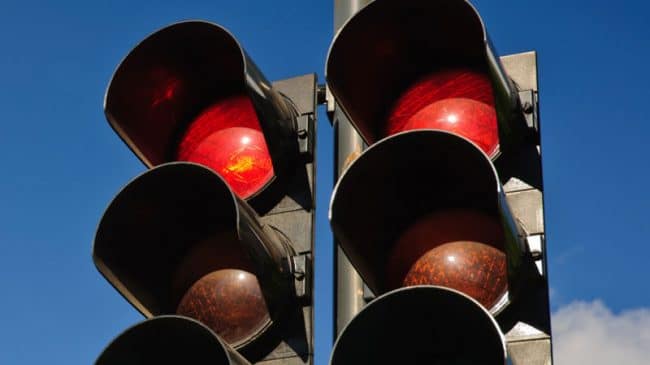Today, Orange County residents can choose to pay a toll to use the 91 Express Lanes to bypass traffic congestion on the 91. The two Express Lanes handle 49 percent of the peak-direction throughput on the six-lane expressway, even though they represent only 33 percent of the physical lane capacity. These lanes take a simple concept – users pay – and show why it can be so effective. If you want to pay to move into the free-flowing lanes, you can. If you don’t use the lanes, you don’t pay for them.
Reason Foundation’s Southern California’s Mobility Plan recommends taking the user-pays concept and applying it to select, jammed surface streets. While surface streets do not carry the traffic volume of freeways, many are often just as congested. Consider that, at most major cross streets, oncoming traffic in a particular direction receives a green traffic light signal less than 50 percent of the time. So streets with those red lights can only handle 50 percent of the capacity that identical roadways without traffic signals could carry.
A managed arterial concept gives drivers the option to safely skip red lights at the area’s worst bottlenecks. Drivers would have the option to travel through traditional intersections or use new tolled underpasses to bypass traffic signals. Passenger vehicles would be charged a small toll (likely 10-25 cents) per intersection.
City streets with three lanes in each direction and significant traffic congestion are ideal candidates for these underpasses. One potential managed arterial is Beach Boulevard, between Fountain Valley and Buena Park. Traffic delays are common on the six-lane, heavily congested road. For the section between PCH and the I-405, optional tolled underpasses could be installed at several intersections, including Atlanta, Indianapolis, Adams, Yorktown, Garfield, Ellis, Talbert, Slater, Heil and Edinger avenues. Each underpass would start about a quarter mile before the cross street and end a quarter of a mile after it.
There are several advantages to converting a six-lane arterial like this to a managed arterial instead of widening it to eight lanes. Managed arterials can carry 20,000 more vehicles per day than an eight-lane arterial. Managed arterials fit into the same physical space, meaning additional land doesn’t need to be acquired. Finally, construction and maintenance of underpasses can be funded using the toll revenues they would generate, so no new taxes or tax increases are needed to build them.
Combining the ability to skip busy intersections with better stop-light management would make getting around Orange County’s surface streets much speedier. All Orange County traffic lights are synchronized, but many operate in static mode, meaning they don’t adjust when the road is backed up. Moving to dynamic, variable synchronization, where the length of green-light signals adjusts in real time to traffic conditions, would reduce traffic delays.
Technology and pricing can help loosen some of the worst bottlenecks in Orange County, which would mean more employment and recreational opportunities for everyone.
Baruch Feigenbaum is assistant director of transportation policy at Reason Foundation. This article originally appeared in the Orange County Register.

